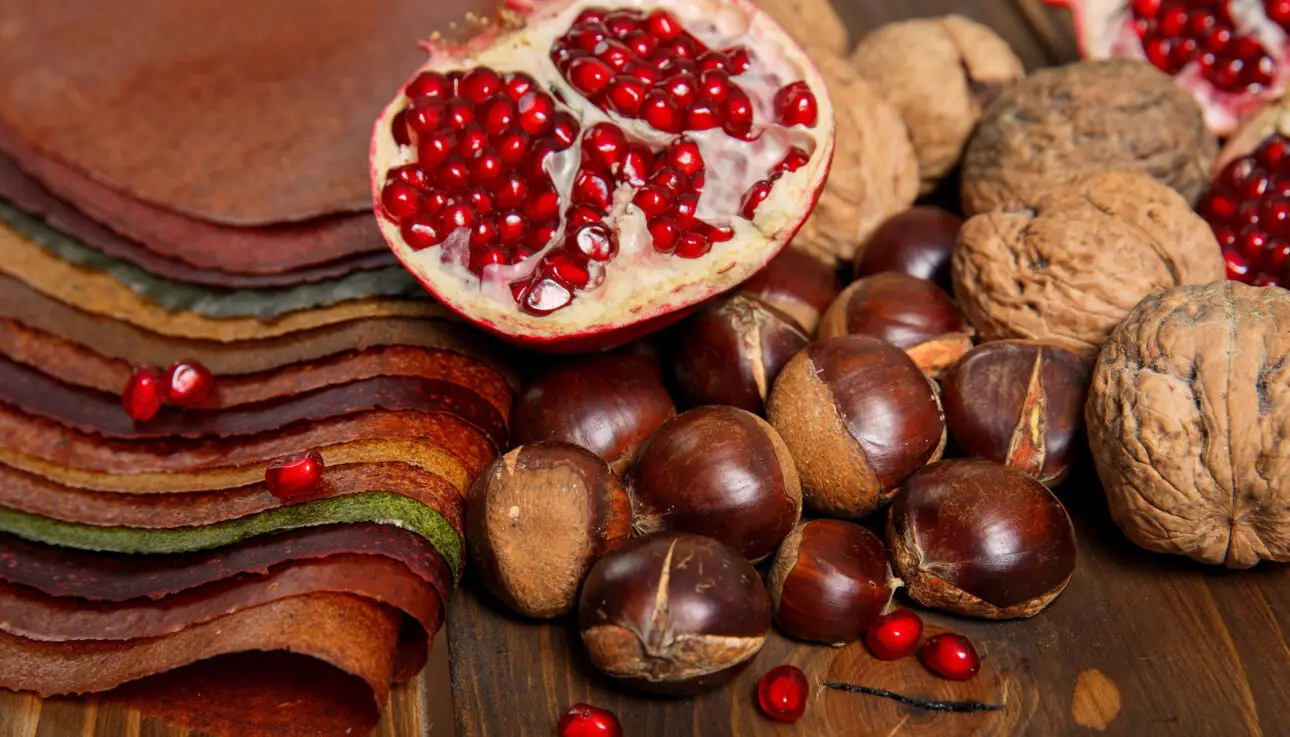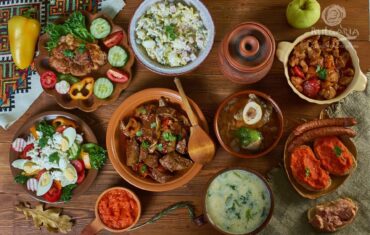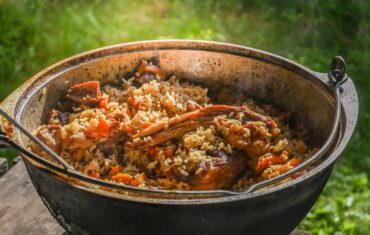In this beginner’s guide to Armenian cuisine, we explain some of the key dishes you will get to sample for those thinking of visiting this fascinating Caucasus country.
Armenian cuisine is a combination of different tastes and aromas. Closely related to both eastern and Mediterranean cuisine, various spices, vegetables, fish, and fruits combine to present uniquely flavoured dishes. Armenians are famously very artistic and creative and the same talents apply to their culinary skills.
The History and Location of Armenia have greatly influenced the cuisine. Armenian food traditions have deep roots in the fertile Armenian Highlands, a region perfect for growing essentials like wheat, lentils, apricots, figs, and the beloved pomegranate. But this location also placed Armenia at the crossroads of warring empires, which left its mark on the country’s food culture, making it a tapestry of evolving influences over the centuries. Because of their geography and shared histories, many Armenian dishes can also be found in similar forms in the cuisines of its neighbors like Georgia, Turkey, Azerbaijan, Uzbekistan, Iran, and the North Caucasus.
With waves of migration, Armenian cuisine continued to transform, resulting in striking differences between dishes in the Caucasus and those known by the diaspora. Take choreg, the rich Armenian Easter bread traditionally flavored with ground sour cherry seeds: while it’s a favorite among Armenians abroad, it’s practically unheard of in Armenia itself. This blend of continuity and change is what makes Armenian food culture so unique and layered across regions
Key features of Armenian cuisine are lamb, yogurt, aubergine (eggplant) and bread (Lavash). Fresh and dried herbs are ussed extensively. Pork is also popular and is considered an important marker of their Christian culture – with roast piglet (gochi) traditionally eaten at New Year).
Cheese is a staple and traditionally was eaten every day. Fresh herbs are used extensively, dried in the winter months. Traditionally cracked wheat (bulgur) is used rather than maize or rice, although rice is used more in the rice growing areas of Marash and Yerevan. Legumes are used liberally, as are nuts for texture including walnuts, almonds, pine nuts, hazelnuts and pistachios. Fresh and dried fruit are used in dishes to add flavour and fruit and vegetable leaves are used to create stuffed parcels of food such as tolma
Armenian cooking places a high value on quality ingredients combined with nostalgia, with recipes passed down through generations, offering dishes that are both comforting and celebratory.
Lavash. A centerpiece of Armenian meals is lavash, a thin, soft flatbread baked in underground clay ovens called tonirs. Lavash is often eaten with cheese, fresh herbs, or grilled meats and is used in traditional dishes like khurjin, lamb or other meats wrapped in lavash and baked. In fact, Lavash is so crucial to Armenian heritage that it has earned a place on the UNESCO world heritage list (to the ire of Armenia’s neighbours who all cook versions of Lavash, and historians believe it may have originated in the middle east).
Another beloved dish is khorovats, the Armenian version of barbecued shish kebab or shashlik, featuring marinated meats such as pork, lamb, or chicken grilled over an open flame with vegetables. It is a celebratory dish, often eaten on special occasions.
Tolma (Dolma): Popular appetizers include tolma (also called dolma). This is one of Armenia’s most iconic dishes and consists of grape leaves, cabbage or bell peppers stuffed with flavourful, spiced meat, rice, and herbs. It may be accompanied by eech (itch) similar to Lebanese tabbouleh, a salad of parsley, bulgur, onions, peppers, paprika, lemon, olive oil and tomatoes. Tolma is so revered in Armenia that there is a festival each year, where the country’s top chefs compete to create the best tolma, based on taste and presentation.
Basturma and Sujuk/Yershig: Basturma is Armenia’s take on cured beef, seasoned with garlic, fenugreek, and spices before being air-dried. This spicy, flavorful meat is often sliced thin and served with fresh herbs and bread. Sujuk/Yershig is a type of spicy sausage made from ground beef or lamb and packed with aromatic spices, which is another beloved cured meat often served as a breakfast or appetizer, or as an ingredient to flavour other dishes.
Boereg (byorek) is a filo or puff pastry parcel, containing meat, cheese, vegetables or potatoes. They can also be sweet and are similar to the filled pastries found across the Levant, Balkans and Central Asian countries.
Lamadjo is a bit like pizza without cheese and consists of a thin layer of dough topped with minced meat, herbs and spices. It is usually rolled up and eater like a wrap with onions, tomatoes, peppers, eggplant and pickles.
Harissa is a slow-cooked porridge made from cracked wheat and chicken (although lamb was used in the past). Harissa has a deeply symbolic role in Armenian culture, often prepared during religious observances or as a communal feast. Many consider it a national dish due to its popularity. The dish is creamy, hearty, and rich in flavor, and is often served with a sprinkle of cinnamon or butter on top. The ritual of cooking harissa means it takes a long time to cook
Khashlama is a comforting traditional meat stew typically made with lamb or (sometimes) beef, khashlama is slow-cooked with potatoes, onions, tomatoes, and a blend of herbs like parsley and dill. This dish, considered a symbol of Armenian hospitality, is often made for special occasions and family gatherings. It is a dish often cooked by men, outdoors and in the summer. This is because the dish began to coincide with the annual slaughtering of lambs and the new fresh summer vegetable harvest. Both Armenia and neighbouring Georgia claim to have invented the dish.
Manti: Armenian manti are small, boat-shaped dumplings filled with spiced minced meat and boiled or baked until crispy. Unlike other types of dumpling, Armenian manti are always made in an open canoe shape. They’re then often topped with a garlicky yogurt sauce and often drizzled with a tomato-based sauce. This dish, which requires patience and skill to prepare, is typically a communal meal, as friends and family gather to help make the dumplings.
Kofta (Kyufta): Armenian kofta or kyufta are large, meatball-like patties made from finely ground beef or lamb mixed with spices. The meat is often pounded or kneaded until smooth, creating a delicate texture. Traditionally served with bulgur or a yogurt-based sauce, this dish is a popular choice for celebrations and special occasions.
Ghapama: A festive dish particularly popular in autumn, ghapama is a hollowed-out pumpkin stuffed with rice, dried fruits like apricots, raisins, and plums, along with honey and nuts. After being baked in a tonir, the pumpkin is sliced open like a flower and served warm, often at family gatherings and holidays.
Spas: A light yogurt soup, spas is a beloved dish in Armenia and is made with tangy matzoon (Armenian yogurt), wheat or rice, and fresh herbs like cilantro or dill. It can be enjoyed warm or cold and is especially refreshing during the summer.
Fruit: Armenia is famous throughout the Caucasus region for its sweet juicy peaches, apricots, quince and walnuts and these feature in the sweet dishes, often combined with honey and cinnamon
Pomegranates. Alongside apricots and grapes, pomegranates hold a special place in Armenian culture. Native to the Armenian Highlands, the pomegranate is a beloved national symbol, standing for fertility, abundance, and even the bond of marriage. Pomegranates are an essential part of Armenian life. The fruit’s tart-sweet seeds are enjoyed fresh but are also sprinkled over meats and fish, adding both flavor and a pop of color to dishes. Pomegranate juice is a go-to drink, and some of it is even fermented into a semi-sweet wine that’s both delicious and packed with health benefits.
Zhingyalov Hats: This is a flatbread stuffed with a variety of finely chopped greens, like spinach, cilantro, parsley, and wild herbs native to Armenia. The bread is then cooked on a griddle or in an oven. Each bite of this dish bursts with fresh, earthy flavors, and it’s particularly popular in Armenia’s Artsakh and Syunik regions.
Topik is a chickpea and potato vegan dish served during Lent. It’s made with a chickpea and potato paste filled with a cooked mixture of onions, currants, nuts, tahini, herbs, and spices. They’re typically formed into patties or balls and topped with pine nuts, currants, cinnamon, and lemon.
Armenian cheese or chechil is a low fat cheese, similar to mozzarella. It’s smoked in long strips to create a salty, smokey and chewy snack – perfect with beer or a few drinks! It’s produced in the highlands and is usually sold in thick plaited ropes.
Gata is a sweet pastry filled with a sugar-butter mixture, similar to croissants or other shapes. They are filled with sweet filling and sometimes walnuts.
Sujukh, is a walnut-stuffed, syrup-coated delicacy, which adds a sweet touch to the Armenian table.
Armenian cuisine is also known for its dried fruits and nuts, which accompany tea or coffee and add an extra layer of flavor to the culinary experience.
Pakhlava (baklava) is made with thin layers of pastry, nuts, and honey syrup. Alani is a special treat where dried peaches are stuffed with nuts and honey. Churchkhela, known as sujukh in Armenia, is a string of walnuts coated in grape molasses and dried, making for a chewy, sweet snack.
Mikado Cake is a very old Armenian layer cake with multiple thin layers covered in chocolate custard or caramel buttercream.
Finally, T’tu Lavash or Pastegh (Bastegh) is fruit leather sold in giant vibrant coloured rolls, and similar across many other regional countries. The process behind t’tu lavash dates back centuries, using sun-dried pureed fruits like grapes, plums, cherries, and especially apricots to form these thin, leathery sheets. It’s enjoyed on its own or even as a tangy addition to Armenian soups, like t’ghit. The apricot ones are especially good. Armenians take special pride in their apricots (Prunus armeniaca), which are renowned and deeply symbolic in Armenian culture
Armenia is also famous for its wine and brandy, in particular, Armenian konyak, a favourite of Winston Churchill and Franklin D Roosevelt.
Armenia has a long history of wine making. The oldest known winery in the world was discovered in Armenia, and the industry is experiencing a revival.
The Easter Festival is one of the most important in the Armenian Church’s calendar. Families gather to feast on lamb, pilaf and bread. Eggs are dyed and special Easter bread or Choreg is made. See our Blog for a recipe for Armenian Choreg or Sweet Bread.
We hope you’ve enjoyed this beginner’s guide to Armenian cuisine. The best way to learn about Armenian food culture is to go on a tailor-made tour where you can meet the locals, watch them cook, try your hand in a cookery session and browse in local markets. Check out our Taste of Armenia Food and Culture tour.


